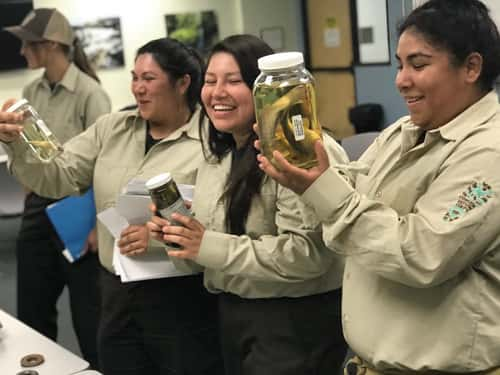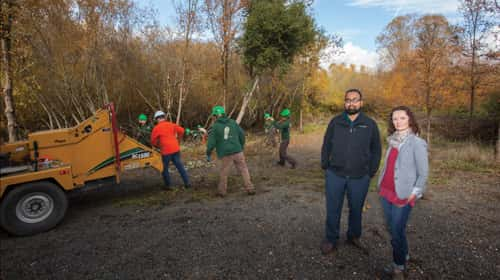
Gangs were a given in the Santa Rosa community of Roseland, when Vicente Tlatilpa was growing up. It would have been easy for him to fall in with the wrong crowd, but instead, he found Conservation Corps North Bay (CCNB), which provides year-round job training and education services for disadvantaged youth. It turned out to be a life changer.
“I was one of those kids who fell through the cracks,” says Tlatilpa, 28, explaining that he attended a high school with a focus on college, but that wasn’t an option for him, and he did only what was necessary to pass and then dropped out. Then in 2009, when he was about to turn 19, CCNB came into the picture. He’d been to Outward Bound in Oregon when he was 16, and while at the experiential outdoor school, he’d developed a love for nature. He also had a friend at California Youth Outreach, a Santa Rosa organization that works with disconnected youth to empower them, and from him, he learned about CCNB. “I didn’t know how to get a job. I had no skills,” he says, but his contact took him to an interview. He appeared before a panel with representatives from both CCNB’s natural resources and recycling programs, and they accepted him and gave him a job on a Natural Resources Crew. “They made the decision based on what was the best fit,” he explains. Corpsmembers also do coursework to complete their high school education, and he enrolled at John Muir Charter School. “In around three months, I’d already graduated,” he reports. In addition, after his initial work in natural resources, he moved on to work on the recycling team. “It was really cool to be part of it,” he says.
The inspiration for CCNB goes back to 1981, when Richard Hammond went for a run in the Marin Headlands and discovered the trails in poor condition. He took action by creating a summer project for his teenage sons and their friends, who made repairs while developing an appreciation for the county’s natural resources and an understanding of the need for community service. Then, in the first week of January 1982, a catastrophic storm dumped 18 inches of rain on Northern California in just a few hours, hitting Marin and Santa Cruz counties especially hard. The result was floods, deadly mudslides and uprooted trees. Later in the year, with Hammond’s project as a model, the Marin Conservation Corps formed to repair some of the damage, becoming the first local conservation corps in the country. It opened offices on the campus of Marin Academy in San Rafael in the summer of 1982, and 40 teenagers, ranging in age from 15 to 18, spent six weeks of their vacation repairing trails on Mt. Tamalpais. “These young people worked six hours a day restoring portions of Bootjack, Stapleveldt, Fern Canyon, Dipsea and Matt Davis trails and also spent one hour each day on environmental awareness activities that earned them high school credit,” says Anastasia Pryor, CCNB’s director of Development and Communications. From there the organization grew, eventually becoming Conservation Corps North Bay, and it has put thousands of young people on the path to success as well as completing a wealth of environmental projects.
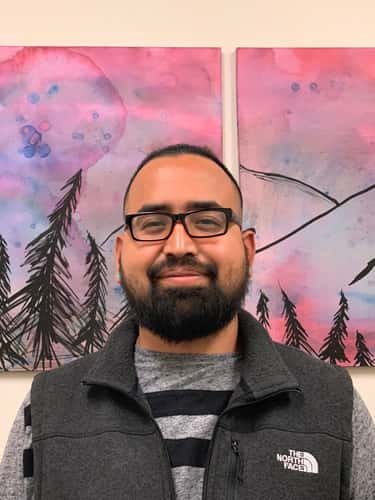
Education
Today, corpsmembers work in one of two fields—recycling or natural resources—while they attend school or work on their career pathway goals. Many of them are living near the poverty line, and so CCNB pays them for their work, allowing them to complete their education while earning a living wage. They get their high-school diplomas, job training and experience, and they also learn how to create a résumé, handle a job interview and dress appropriately. They range in age from 18 to 30, but the majority are 20 and under. John Muir Charter Schools operates all of CCNB’s campuses, which are in San Rafael, Cotati and Santa Rosa, which is in a new location that CCNB took over from Community Action Partnership of Sonoma County earlier this year, after that organization discontinued a program. The schools offer core subjects, such as English and algebra, as well as individualized programs designed to accommodate each student’s needs while meeting the California Department of Education’s requirements for high-school graduation. Teachers look at a student’s strengths and weaknesses and what he or she needs to do to graduate, and although students attend classes, they might do some coursework one-on-one with a teacher or online as well. In addition, nine students in San Rafael are enrolled in a program for English-language learners, and two teachers work with them for eight hours a week. Students typically attend classes four days a week and work for one, but that can change depending on an individual’s needs. Some students might work more days or split some days between work and school. Weekly community meetings are also part of the experience, with one in each county, and Pryor explains that the meetings have practical reasons. When everyone is together, students can fill out surveys or perhaps evaluate where they are in their individual plans. Equally valuable, it allows bonding and is a way for all the students to work together as a unit. Pryor went to one of the meetings during her first week of work at CCNB and was sold on the concept. “It’s a nice check-in for everyone to do every week,” she observes.

Tlatilpa considers the opportunity CCNB offered him a second chance. He was short about 15 credits in science, physical education, computer and English, and the teachers looked at the missing pieces and created a curriculum that met his particular needs. “I took a lot of work home,” he says, and he started in July and completed his studies in October. He was the first in his family to graduate from high school, and “I did it for my mom,” he says, because he recognized how meaningful it would be to her. He stayed at CCNB until 2012 and says, “They helped me build a foundation that’s made me successful.”
Employment
The educational component is a crucial, but students also have to support themselves. “Corpsmembers are with us, because they need paid work,” says Pyor. She adds that officials at CCNB recently made a business decision to increase the starting corpsmember salary after looking at local living expenses, because hiring people had become a challenge. “We bumped it to $13,” she says, explaining they didn’t want corpsmembers to give up a career trajectory and a chance to develop skills because they needed to go to a place like McDonald’s to earn more money. “So many don’t have the tools and resources to do it on their own,” she says, and so paid work is essential if they are to succeed.
CCNB offers two career pathways: the recycling track and the natural resources track. The recycling program got its initial funding from the Bottle Bill, officially called the California Beverage Container Recycling and Litter Reduction Act (AB2020), which was enacted in 1986 to encourage recycling and reduce litter. “They call it the Bottle Bill, because that’s how it started out,” says Pryor, who explains that CCNB pays some corpsmembers through CalRecycle (California Department of Resources Recycling and Recovery). It’s a busy unit, and they go out to work on projects in state and national parks in Marin and Sonoma counties and collect used tires at community events. “We do all the recycling for the Marin County Fair,” she says, and when they have the opportunity, corpsmembers educate the community about effective practices for recycling materials as well.
Corpsmembers on the environmental resources track work with a variety of different partners to do maintenance and preventive work. They help to maintain waterways and clear streams for Marin Municipal Water District, for example, thereby making floods in the watershed less likely. Other work includes removing brush that is non-native or a fire hazard in the Golden Gate National Recreation Area. Projects in Sonoma County are similar, and partners in the areas CCNB serves pay for corpsmembers’ work to either prevent natural disasters or help with disasters on the spot, when they occur.
The goal for each corpsmember is finding a job with a living wage or enrolling in college. “That’s the measure of success,” says Pryor. Not all corpsmembers are in school, however. “We do have people who come to us because they’re so interested in working in the environmental sector,” says Pryor, and they want hands-on experience in that field. Others want paid jobs that will give them training that leads to certification for skills such as building trades, operating chain saws and building bridges.
While putting students on pathways to careers and good jobs is the priority, CCNB corpsmembers often come away with more. It is an immense personal accomplishment for those who are the first in their families to graduate from high school, and the work also gives them a chance to feel good about contributing to the community, frequently for the first time. As corpsmembers work to protect homes and public lands, people approach them to say thank you and perhaps give them water, showing how important their work really is to the community.
Experience
The hands-on work gives corpsmembers valuable experience, but CCNB also encourages personal development. Tlatilpa explains that corpsmembers can apply for leadership roles. Among the options, they can become safety officers, who assemble first-aid kits, or crew leaders, who are like supervisors, and they can put those roles on their résumés, giving them the potential for advancement. When he left CCNB, Tlatilpa applied for a stocker position at Sear’s, but went on to become an assistant manager. “I did it for a year, and it was good experience,” he says. Next, he went to work at the Indian Valley Organic Farm and Garden on the College of Marin’s Novato campus, which CCNB helped to establish. He loved it and says, “Someday, I’m going to have a farm.” Next came truck driving. It was something he was intent on doing, so he went to truck-driving school, completed the course and got a job, but discovered he hated the solitary nature of the work. Nonetheless, he accomplished a goal that wouldn’t have been possible without his experience at CCNB, and he has a Class A commercial driver’s license that allows him to do some driving on the side for wineries. Several years of caregiving followed, but he started to burn out and left to sell car insurance and lead-acid batteries, which gave him the chance to meet and deal with all kinds of people.
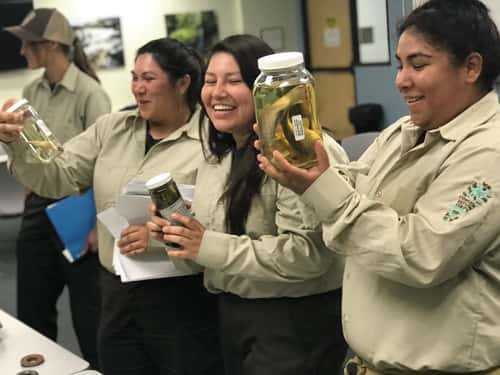 Although Tlatilpa continued to be gainfully employed and was building a track record, something was missing. “I wasn’t doing anything to help my community,” he says, and then he saw an ad for CCNB, applied and got a job as an assistant supervisor in the recycling division in Novato, where he kept on learning and growing as a professional. While there, he found that his experience helped him to connect with others who were just starting. His family came to California from Mexico in the 1980s, and “I’ve always loved all cultures,” he says. He’s bilingual and discovered that he had students from Guatemala who wanted to learn English, and he helped them practice vocabulary during the down time, when they were driving from one location to another. He was also a forklift instructor and was able to teach students how to operate the equipment in Spanish, and he gives CPR instruction in Spanish as well. “It’s been really good for everyone,” he says.
Although Tlatilpa continued to be gainfully employed and was building a track record, something was missing. “I wasn’t doing anything to help my community,” he says, and then he saw an ad for CCNB, applied and got a job as an assistant supervisor in the recycling division in Novato, where he kept on learning and growing as a professional. While there, he found that his experience helped him to connect with others who were just starting. His family came to California from Mexico in the 1980s, and “I’ve always loved all cultures,” he says. He’s bilingual and discovered that he had students from Guatemala who wanted to learn English, and he helped them practice vocabulary during the down time, when they were driving from one location to another. He was also a forklift instructor and was able to teach students how to operate the equipment in Spanish, and he gives CPR instruction in Spanish as well. “It’s been really good for everyone,” he says.
Full circle
Today, Tlatilpa is a recruiting and orientation coordinator for CCNB, in a full-time position funded in part with a grant from REDF, a San Francisco philanthropic organization that invests in social enterprises focused on employment. “We were able to hire him. He’s an amazing advocate for the program, says Pryor. She explains that he has an extensive outreach program, and the flow of work is constant. Currently, 53 corpsmembers are enrolled, but CCNB can serve upwards of 200. Though students work year-round, some of the work is seasonal. “Summer is our busiest time,” she says.
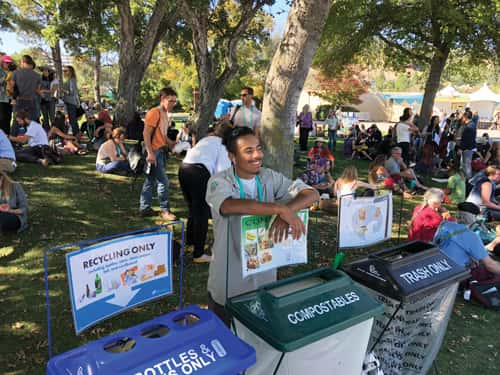
As a recruiter, Tlatilpa travels to Sonoma, Marin and Napa counties to tell young adults what CCNB has to offer, and services extend to Richmond, so he visits Contra Costa as well. He goes to organizations and youth shelters, makes presentations at schools and works with probation departments and juvenile hall. He also has some unconventional ideas, such as visiting barber shops, because barbers get to know the youth whose hair they cut and might know someone who could benefit from CCNB’s programs. “I try anything and everything to let people know,” he says. Tlatilpa built a foundation and wants to help others build theirs so they can be successful adults.
Beyond education and the experience that hands-on work provides, the values that CCNB encompasses are an integral part of the program. “The culture is all about preservation and understanding that our resources are finite,” Tlatilpa explains, adding that he separates his own materials for recycling and composts waste. “It’s something that we instill in everyone before they leave.” He adds that some participants even leave with political views they didn’t have before. Some corpsmembers are surprised to learn that they’re eligible to vote, perhaps because they’ve had encounters with the legal system and have misdemeanors. In such cases, staff members encourage them to register and help them understand that each vote is important. “It’s really cool to tell someone who’s young their voice matters. Whenever we can broaden someone’s horizons, we go for it,” he says.
It’s about fostering youth and giving them opportunities they never imagined possible. “CCNB is a place where you have the desire to better your life and learn something new,” says Tlatilpa. “This is where you can really cut your teeth and get the tools to be a better version of yourself. It’s a program that if you have a will, they’ll find a way, and that’s special.“ Society as a whole benefits when young people break out of the cycle of poverty and become productive members of the community. And when they care for and improve the natural environment, it’s even better. Put everything together, and CCNB’s mission has inestimable value.
The Numbers
Young people served: 12,000
Volunteers hours to date: 3 million
Work on public lands: 150,000 acres
Conservation Corps North Bay gives young people with uncertain futures the opportunities to create better lives for themselves and their families. Here are few highlights from CCNB:
99 percent are living at or below the federal poverty line when they join CCNB.
68 percent identified as Opportunity Youth: ages 16-24, and not in school, or working before joining CCNB.
40 percent are Hispanic, 24 percent are Caucasion, 8 percent are African-American, and 28 percent are either Asian or have other ethnic origins.
Source: Conservation Corps North Bay
Year in review
In the last year, CCNB corpsmembers not only improved their lives, but they also supported their local communities. Here’s the year in review from CCNB:
207 youth served.
30 graduates from CCNB School Sites in San Rafael and Cotati and its new site Youth Connections Charter Academy in Santa Rosa.
244 skill-based certifications earned.
Post-placement wage average $15.86/per hour.
83 percent of engaged corpsmembers who have completed the program since fiscal year 2016-17 have enrolled in education, been employed or both.
Throughout the year, CCNB crews supported their communities. Here’s an overview of some of their accomplishments:
Reduce hazardous fuels on 310 acres in “wildland-urban interface” areas across Marin and Sonoma counties.
Maintain 126 miles of trails, including the construction of 452 stairs.
Perform 65 acres of habitat restoration services, remove invasive species from 169 acres of public lands, and plant 1,009 native trees and shrubs.
Removed 76 tons of litter from local roadways.
Collect 846,351 lbs. of E-waste.
Collect 551, 688 lbs. of beverage containers.
Recycle 7,873 tires.


